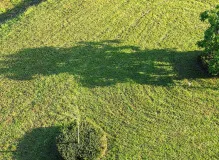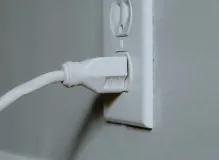For over long years, we have diligently conducted independent research and product testing. When you make a purchase through our links, we may earn a commission.
Breaking News: Real-Time Oregon Flat Fire Map Revealed
Created: 3 days ago

16 min Read
Introduction: The Oregon Flat Fire and Its Impact
The Oregon Flat Fire has been a devastating event that has caused widespread destruction and had a significant impact on the surrounding areas. This blog post aims to provide you with a comprehensive overview of the fire, including its causes, the areas affected, and the efforts taken to contain and mitigate its impact.
Understanding the Oregon Flat Fire
The Oregon Flat Fire, also known as the "Flat Fire," refers to a wildfire that broke out in the state of Oregon. This fire quickly spread across vast stretches of land, engulfing forests, grasslands, and residential areas in its path. The fire has been fueled by a combination of high temperatures, dry vegetation, and strong winds, making it incredibly challenging to control.
The Impact on Communities and Wildlife
The Oregon Flat Fire has had a severe impact on the communities directly affected by the blaze. Homes, businesses, and infrastructure have been damaged or destroyed, displacing residents and causing widespread disruption. Additionally, the fire has had a significant ecological impact, resulting in the loss of wildlife habitats and endangering various species.
Efforts to Contain and Mitigate the Fire
In response to the Oregon Flat Fire, a coordinated effort involving firefighters, emergency responders, and volunteers has been underway to contain and mitigate the fire's spread. Firefighters have been working tirelessly to battle the blaze and protect vulnerable areas. Additionally, evacuation orders have been issued to ensure the safety of residents.
The Importance of Fire Safety Measures
The Oregon Flat Fire serves as a potent reminder of the importance of practicing fire safety measures. It is crucial for residents and communities in fire-prone areas to have a robust emergency plan in place, including evacuation routes, communication methods, and awareness of local fire regulations. Taking proactive steps to mitigate fire risks, such as clearing vegetation around homes and buildings, can go a long way in minimizing the potential impact of wildfires.
Conclusion
The Oregon Flat Fire continues to pose challenges to the affected communities and the environment. By staying informed, prepared, and taking necessary precautions, we can collectively minimize the risk and impact of wildfires. Remember, the safety of individuals and the preservation of our natural landscapes should always be our utmost priority. Stay tuned for our next blog post, which will delve into the recovery and restoration efforts following the Oregon Flat Fire.
Overview of the Real-Time Fire Map Technology
Real-time fire map technology has revolutionized the way wildfires are tracked and monitored, providing valuable information to emergency responders, communities, and the general public. These interactive maps display important data such as the location of fire incidents, the extent of the affected areas, and the current status of firefighting efforts. Let's delve into the features and benefits of using real-time fire maps during events like the Oregon Flat Fire.
Tracking the Progression of the Fire 🔥
Real-time fire maps offer a visual representation of the fire's progression, allowing users to see how the fire has spread over time. The maps typically use color-coded markers to indicate the intensity or severity of the wildfire, enabling authorities to assess the potential threats and allocate resources accordingly. This information is crucial for making informed decisions about evacuations, containment strategies, and resource management.
Identifying Affected Areas 📍
One of the most significant advantages of real-time fire maps is their ability to identify and display the areas directly impacted by the fire. By overlaying satellite imagery with fire data, these maps provide a clear picture of which regions are at immediate risk. This helps emergency responders to prioritize their efforts, evacuate residents in harm's way, and coordinate rescue operations effectively.
Enhancing Public Awareness and Safety 🚒
Real-time fire maps empower individuals and communities to stay informed and make informed decisions about their safety. By accessing these maps, people can gain a better understanding of the fire's proximity to their location, enabling them to take necessary precautions. Furthermore, these maps often provide additional information such as evacuation routes, shelter locations, and emergency contact numbers, bolstering public awareness and overall preparedness.
Collaborative Efforts and Resource Allocation 🤝
Real-time fire maps also facilitate collaboration among different agencies and organizations involved in firefighting efforts. By sharing the same visual information, firefighters, emergency responders, and volunteers can coordinate their actions more effectively. This allows for better resource allocation, reducing duplication of efforts and ensuring that critical areas are attended to promptly.
Conclusion
Real-time fire maps are invaluable tools in tracking and managing wildfires like the Oregon Flat Fire. They provide crucial information for emergency responders, communities, and individuals, helping to enhance safety, facilitate decision-making, and optimize resource allocation. By harnessing the power of technology, we can better understand and respond to these devastating events, minimizing their impact on lives and the environment. Stay tuned for our next blog post, where we will explore additional strategies and technologies used in wildfire management. 👩🚒🌲🔥
How the Real-Time Fire Map Works: Data Collection and Analysis
Real-time fire map technology has revolutionized the way wildfires are tracked and monitored, providing valuable information to emergency responders, communities, and the general public. These interactive maps display important data such as the location of fire incidents, the extent of the affected areas, and the current status of firefighting efforts. Let's delve into the features and benefits of using real-time fire maps during events like the Oregon Flat Fire.
Tracking the Progression of the Fire 🔥
Real-time fire maps offer a visual representation of the fire's progression, allowing users to track its movement in real-time. By utilizing satellite imagery and monitoring systems, these maps collect data on fire hotspots, fire spread, and fire intensity. This data is continuously updated and displayed on the map, giving emergency responders and communities an accurate understanding of the fire's current state and potential threat.
Fire Incident Reporting 📊
Real-time fire maps rely on accurate and timely incident reporting to provide up-to-date information. Firefighters, emergency response agencies, and trained observers contribute by reporting fire incidents, including their location, size, and any notable developments. This data is then integrated into the map, providing a comprehensive overview of the fire's overall impact.
Weather Conditions and Fire Behavior ⛅
Understanding weather conditions is crucial in predicting fire behavior and assessing its potential spread. Real-time fire maps often incorporate weather data, such as wind patterns, humidity levels, and temperature, to help forecast the fire's movement. By analyzing these weather factors alongside the fire's location and intensity, emergency responders can make informed decisions in deploying resources and implementing evacuation measures.
Evacuation and Safety Planning 🚨
Real-time fire maps play a vital role in supporting evacuation and safety planning efforts. By clearly depicting the fire's extent and direction, these maps enable emergency responders to identify at-risk areas and issue evacuation orders accordingly. Additionally, communities can utilize the maps to determine their proximity to the fire and take appropriate precautions to ensure their safety.
Public Awareness and Education 🌍
Beyond emergency response efforts, real-time fire maps also serve as a powerful tool for public awareness and education. By making these maps accessible to the general public, individuals can stay informed about ongoing fire incidents, learn about fire behavior, and understand the importance of fire safety measures. This knowledge empowers communities to take proactive steps in preventing wildfires and mitigating their impact.
Importance of the Oregon Flat Fire Map
In the case of the Oregon Flat Fire, the real-time fire map technology has been invaluable in monitoring the fire's progression and aiding emergency response efforts. By utilizing this advanced technology, responders and communities have gained access to crucial information that helps them make informed decisions, protect lives, and minimize the fire's impact. The accurate mapping and analysis of the fire's size, location, and behavior have facilitated coordinated efforts and optimized resource allocation.
Stay Informed and Prepared
During wildfire events like the Oregon Flat Fire, staying informed and prepared is essential. Keeping track of real-time fire maps and heeding evacuation orders can help ensure your safety and the safety of others. By learning about fire behavior, practicing fire safety measures, and understanding the capabilities of real-time fire maps, we can collectively work toward preventing and mitigating the devastating effects of wildfires.
Continue Reading: Mitigation and Recovery Efforts Following the Oregon Flat Fire
Importance of the Real-Time Fire Map for Firefighters and Emergency Responders
Real-time fire maps have become an invaluable tool for firefighters and emergency responders in their efforts to combat wildfires effectively. These maps provide crucial information and data that can aid in decision-making and enhance response strategies. Let's explore the significance of real-time fire maps in the context of the Oregon Flat Fire.
Enhanced Situational Awareness 🚨
Real-time fire maps offer firefighters and emergency responders an up-to-date and comprehensive overview of the fire's location, size, and direction. By providing real-time data on the fire's progression, these maps enable personnel to have a clear understanding of the current situation. This enhanced situational awareness allows for better resource allocation, strategic planning, and efficient deployment of firefighting resources.
Improved Response and Resource Allocation 🚒
With the assistance of real-time fire maps, firefighters can make informed decisions on where to prioritize their efforts and allocate resources effectively. These maps provide critical information such as the location of active fire lines, areas at risk, and the potential path of the fire. This data helps firefighters to quickly identify areas requiring immediate attention, allowing them to respond promptly and strategically.
Collaboration and Coordination 👥
Real-time fire maps also facilitate better collaboration and coordination among different response teams and agencies. By providing a centralized platform for sharing information, these maps enable seamless communication and coordination efforts. Firefighters, emergency responders, and incident commanders can access the same map, update information in real-time, and make informed decisions collaboratively. This enhanced collaboration leads to more efficient and effective firefighting operations.
Public Safety and Evacuation Planning 🏘️
Real-time fire maps are not only beneficial for firefighters and emergency responders but also play a critical role in public safety and evacuation planning. By making these maps accessible to the public, communities can stay informed about the fire's proximity to their area and make well-informed decisions. Evacuation routes, safe zones, and areas under evacuation orders can be highlighted on the map, ensuring that residents have the necessary information to evacuate safely.
Effective Decision-Making and Resource Management 💡
Real-time fire maps provide essential data that helps incident commanders and decision-makers make critical decisions regarding resource management. By visualizing the fire's progression and understanding its behavior, decision-makers can allocate firefighting resources effectively. This includes determining the need for additional firefighting personnel, equipment, and aircraft support. The ability to make data-driven decisions ultimately leads to more efficient and targeted firefighting efforts.
Conclusion
Real-time fire maps have become an indispensable tool for firefighters and emergency responders, offering enhanced situational awareness, improved response strategies, and better resource management. These maps not only assist in firefighting operations but also play a crucial role in public safety and evacuation planning. As technology continues to advance, it is vital to leverage real-time fire maps to mitigate the devastating impact of wildfires and protect both lives and property.
Real-time fire map technology has become an invaluable tool for the general public during events like the Oregon Flat Fire. By providing up-to-date information and visual representations of the fire's location and progression, these maps help enhance awareness and facilitate effective evacuation efforts. Let's explore some of the benefits that real-time fire maps offer to the public:
-
Enhanced situational awareness: Real-time fire maps provide a comprehensive view of the affected areas, allowing individuals to understand the proximity of the fire to their location and assess the potential risks. These maps often include additional details, such as evacuation zones, road closures, and emergency shelters, which help the public make informed decisions about their safety.
-
Timely updates and alerts: Fire maps are updated in real-time, providing users with the latest information about the fire's movement and intensity. Alerts and notifications can be sent to users, keeping them informed about any changes in the fire's status or evacuation orders. This timely information helps individuals stay ahead of the fire and take necessary actions to protect themselves and their loved ones.
-
Planning and evacuation assistance: Real-time fire maps allow individuals to plan and prepare for evacuations more effectively. Users can identify evacuation routes, determine alternate paths, and locate safe areas based on the information provided on the map. This helps in reducing confusion and congestion during emergency evacuations.
-
Coordination and communication: Fire maps often include features that enable users to report incidents, request assistance, and communicate with emergency responders. This fosters a sense of community involvement and facilitates better coordination between the public and authorities involved in firefighting and evacuation efforts.
-
Access for remote areas: Real-time fire maps can be accessed from various devices, including smartphones, tablets, and computers. This ensures that people in remote or rural areas, who may not have immediate access to traditional sources of information, can still stay informed and make informed decisions based on the evolving fire situation.
-
Educational purposes: Fire maps also serve an educational purpose, allowing the public to understand the behavior of wildfires and the importance of fire safety measures. By visually representing the extent and impact of the Oregon Flat Fire, these maps raise awareness about the need for preventive measures and responsible fire management.
In summary, real-time fire maps greatly benefit the general public by enhancing awareness, facilitating evacuation efforts, and empowering individuals to make informed decisions during events like the Oregon Flat Fire. These maps play a vital role in ensuring public safety and minimizing the potential impact of wildfires.
Challenges and Limitations of the Real-Time Fire Map
While real-time fire maps have proven to be an incredibly valuable tool in monitoring and tracking wildfires like the Oregon Flat Fire, it is important to acknowledge their limitations and potential challenges. Understanding these factors can provide a more comprehensive view of the capabilities and drawbacks of using real-time fire maps during such events.
1. Accuracy and Reliability
One of the primary challenges of real-time fire maps is ensuring the accuracy and reliability of the data they provide. While these maps rely on various sources such as satellite imagery, weather data, and reports from ground crews, there is still room for errors and discrepancies. Factors like smoke obscuring visibility, technical issues, or delays in data updates can impact the real-time nature of the map and affect its accuracy.
2. Scale and Resolution
Real-time fire maps often provide an overview of the fire's extent and general location. However, due to the scale and resolution limitations, it may be challenging to accurately depict the exact boundaries and details of the fire. This can impact the ability to make precise assessments of affected areas and plan firefighting efforts accordingly.
3. Interpretation and Visualization
Interpreting the information presented on a real-time fire map can also be a challenge. The map may display various symbols, colors, and data points that require understanding and interpretation. Without proper context and familiarity with the map's key, it can be challenging for non-experts to fully comprehend and utilize the information provided.
4. Accessibility and Connectivity
Real-time fire maps rely on internet connectivity and access to digital platforms to be effective. In remote areas or during emergencies where connectivity may be limited or disrupted, accessing and using real-time fire maps may not be possible for all users. This can hinder the dissemination of critical information to affected communities and emergency responders.
5. Need for Supplementary Information
Real-time fire maps provide a visual representation of the fire's progression, but they may not always offer comprehensive information about evacuation orders, road closures, or specific safety instructions. Users relying solely on the map need to seek additional information from reliable sources to make informed decisions and take appropriate actions.
Conclusion
While real-time fire maps are powerful tools for monitoring and tracking wildfires like the Oregon Flat Fire, they are not without their challenges and limitations. It is essential to consider these factors and use real-time fire maps in conjunction with other resources and information sources to gain a comprehensive understanding of the situation. By understanding the strengths and weaknesses of real-time fire maps, we can make more informed decisions and work towards effective fire management and response strategies.
The Future of Real-Time Fire Mapping and Its Potential Impact
Real-time fire mapping technology has revolutionized the way wildfires are tracked and monitored, providing invaluable information to emergency responders, communities, and the general public. With its ability to display the location and extent of fire incidents, as well as the current status of firefighting efforts, real-time fire maps have become an indispensable tool in wildfire management. As we look to the future, advancements in technology and data integration will further enhance the effectiveness of these maps, leading to improved fire prevention, response, and mitigation strategies.
Enhancements in Technology
As technology continues to evolve, we can expect real-time fire mapping systems to become even more sophisticated. Advancements in satellite imagery, data analytics, and machine learning algorithms will enable more accurate and detailed fire detection and mapping. These technological improvements will provide faster updates on fire progression, better identification of high-risk areas, and more precise predictions of fire behavior.
Integration of Data Sources
To further harness the power of real-time fire mapping, the integration of various data sources will be crucial. Combining satellite data, weather information, topographic data, and real-time sensor data can provide a comprehensive understanding of wildfire patterns and dynamics. This integrated approach will enable emergency responders to make more informed decisions, allocate resources effectively, and prioritize areas for evacuation or containment.
Improved Accessibility and User-Friendliness
Making real-time fire maps more accessible and user-friendly will also play a significant role in their future impact. User interfaces can be designed to be intuitive and easy to navigate, allowing both professionals and the general public to access and interpret the information easily. Mobile applications and responsive web designs can make real-time fire maps available on a variety of devices, ensuring that crucial updates and evacuation notices reach as many people as possible during fire emergencies.
Potential Impact
The future of real-time fire mapping holds immense potential for minimizing the devastating effects of wildfires. By providing accurate and timely information, these maps can facilitate early detection and rapid response, allowing firefighters to contain fires before they escalate. Enhanced fire mapping capabilities will also aid in the implementation of proactive measures, such as controlled burns and forest management strategies, to reduce fuel loads and mitigate fire risks. Additionally, the integration of real-time fire maps with emergency communication systems will enable more efficient evacuation procedures, ensuring the safety of residents in affected areas.
Harnessing the Power of Real-Time Fire Mapping
The evolution of real-time fire mapping technology offers an optimistic outlook for wildfire management. By leveraging advancements in technology, integrating data sources, enhancing accessibility, and realizing the full potential of these maps, we can significantly improve our ability to prevent, respond to, and mitigate the impacts of wildfires. As we move forward, continuous research, development, and collaboration among stakeholders will be vital in harnessing the power of real-time fire mapping to protect lives, property, and the environment from the devastating effects of wildfires.
Frequently Asked Questions (FAQs)
What is the Oregon Flat Fire Map?
The Oregon Flat Fire Map is a real-time map that shows the spread and current locations of fires in the state of Oregon. It provides valuable information to the public and authorities for monitoring and managing fire incidents.
How is the Oregon Flat Fire Map updated?
The Oregon Flat Fire Map is updated in real-time using satellite data, ground reports, and information from firefighting agencies. The map is constantly monitored and updated to provide the most accurate and up-to-date information about the fire incidents.
Where can I access the Oregon Flat Fire Map?
The Oregon Flat Fire Map can be accessed online through a dedicated website or mobile application. It is freely available to the public and can be accessed from any internet-connected device.
What information does the Oregon Flat Fire Map provide?
The Oregon Flat Fire Map provides information about the location of fires, their size, and the direction of spread. It also includes additional details such as evacuation zones, road closures, and firefighting resources deployed in the affected areas.
Can I contribute information to the Oregon Flat Fire Map?
Currently, the Oregon Flat Fire Map relies on official sources and firefighting agencies for information. However, if you come across any relevant updates or observations, it is recommended to report them to the authorities or emergency services to ensure the accuracy of the map data.
Is the Oregon Flat Fire Map available for other states?
The Oregon Flat Fire Map specifically focuses on the fire incidents in Oregon. However, many other states have their own dedicated fire mapping systems that provide similar real-time information. It is recommended to check the official sources for each state to access their respective fire map services.












